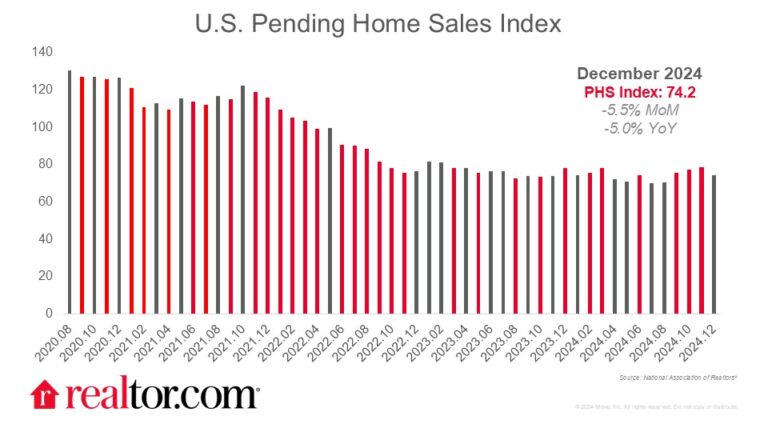What the December pending home sales data shows
Pending home sales fell 5.5% in December as buyers pulled back in response to climbing mortgage rates. Contract signings fell 5.0% year-over-year, the biggest annual dip since July. After more than two years of 6%-or-higher mortgage rates, both buyers and sellers are starting to adjust, but this month’s data marks a step back after 4 months of steady growth. New Home Sales, which are also based on contract signings, climbed 3.6% monthly and 6.7% annually in December, with more affordable inventory driving sales. Though mortgage rates continue to be a challenge, affordable new construction remains an attractive option for home shoppers.
Market activity continues to vary regionally but all four regions saw a dip in contract signings both monthly and annually. The West led the regions with a 10.3% monthly decline, followed by the Northeast (-8.1%), the Midwest (-4.9%) and the South (-2.7%). On an annual basis, the Midwest (-6.9%) saw the biggest dip, followed by the South and West (-5.1% each), and the Northeast (-1.3%).
The South saw the biggest pick up in for-sale housing inventory in December, and boasts a high share of affordable inventory, helping prevent bigger declines in pending home sales. The Northeast and Midwest have seen slower inventory growth as demand remains relatively sustained in the region, as captured in the December Hottest Markets report.
What this means for buyers, sellers, and the housing market
Pending home sales, or contract signings, measure the first formal step in the home sale transaction, namely, the point when a buyer and seller have agreed on the price and terms. Pending home sales tend to lead existing home sales by roughly one-to-two months and are a good indicator of market conditions. The new administration has introduced some uncertainty to the housing market as buyers and sellers evaluate the possible impacts of President Trump’s housing policies on mortgage rates and home prices. However, the seasonal easing of home prices, high inventory and relatively stable, though high, mortgage rates has contributed to steady market activity.





